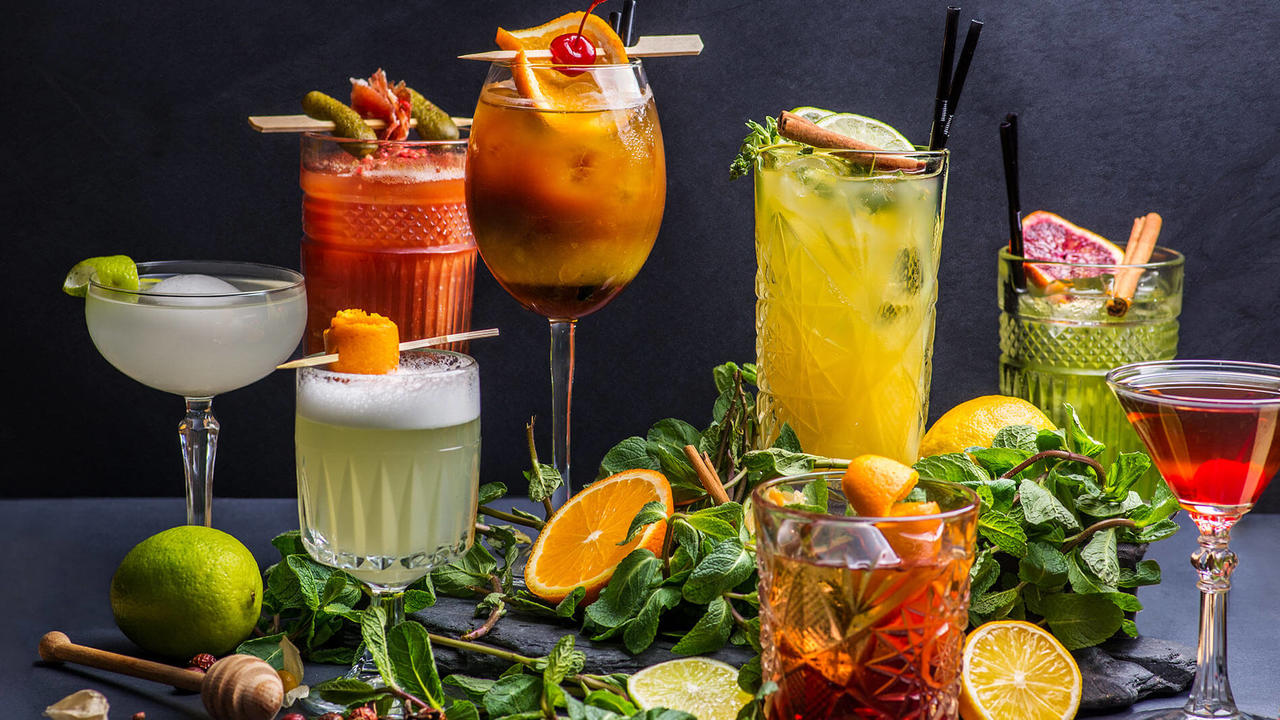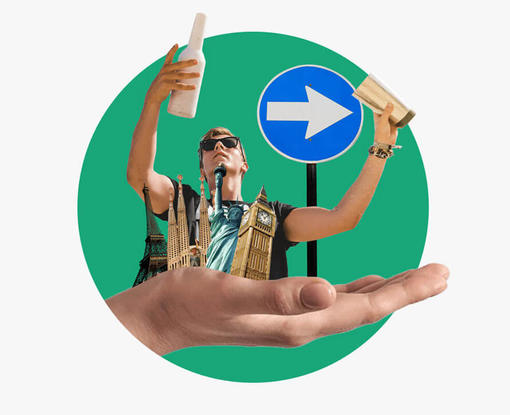According to the Oxford English Dictionary, the definition of a cocktail is: ‘An alcoholic mixed drink’. But there's a whole lot more to a cocktail than just this basic description…
Originally intended to make the harsh taste of alcoholic drinks more palatable, cocktail-making has become a creative art form that bartenders and mixologists the world over are keen to master.
Let's discover the origins of these mixed drinks, the different cocktail types and how to mix your own in this comprehensive guide.
Where does the word 'cocktail' come from?
There are many stories behind the origin of the word ‘cocktail’, but we do know that the term was first seen in print in the U.S. in the early 19th century. On May 13th 1806, the editor of Balance and Columbian Repository newspaper printed an answer to the question ‘What is a cocktail?’ And it’s been a hot topic ever since.
Some etymologists think the word refers to mixed drinks that were made with the leftovers of empty liquor casks. These remnants (called tailings) were mixed in a smaller cask that was then tapped with a spigot, otherwise known as a cock. It's thought that cock-tailings were later shortened to cocktails.
Others give credit to a Mr. Peychaud, an apothecary who blended drinks in a coquetier, the French word for an egg cup. Over time, the word found its way into English as ‘cocktail’, which was easier to pronounce.
The truth is, we may never know where the word really comes from, however, Peychaud's bitters are still a popular mixer in many aperitifs today...
The history of the cocktail
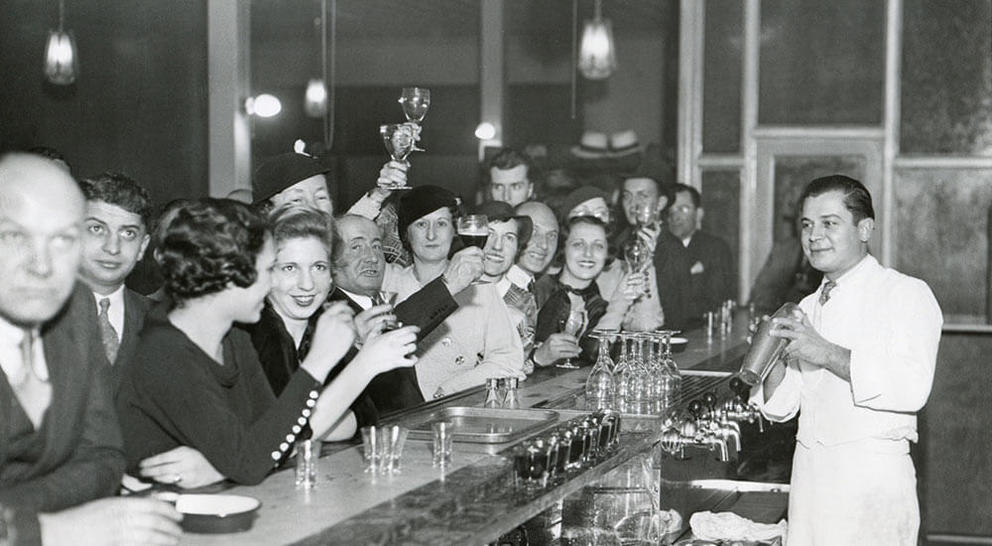
Apothecaries like Mr. Peychaud were early types of mixologists and used a dash of herbal infusions or bracing bitters added to their elixirs. By the 1820s, these drinks had evolved consisting of sugar, water and bitters, according to the Columbian Repository, making up the very first cocktail type.
In 1862 when Jerry Thomas published the first ever bartenders' manual called How to Mix Drinks, the trend for mixing alcohol with other ingredients had taken hold. The book was distributed widely across the U.S and featured recipes that included juleps, fizzes and slings.
Fast forward to the early 20th century, and the advent of refrigeration changed the landscape for bartenders, who now saw tremendous demand for iced and shaken drinks. The boom in cocktail science slowed when America briefly flirted with outlawing all liquor sales and production during the Prohibition Era in the 1920s, although cocktails never truly disappeared, they were just pushed underground into speakeasies where creative Prohibition cocktails were invented.
The end of World War II brought with it a cocktail renaissance all over the world, with a sudden fever for exotic Polynesian drinks and southeast Asian influences. The cocktail party brought the fun of mixed drinks into the home, where amateur bartenders created concoctions with outlandish and occasionally risque names.
As the 1960s and 1970s rolled in though, cocktails were on the decline in favour of beers and wines. But the turn of the 21st century brought a resurgence of traditional drinks, and cocktail culture is once again on the rise!
The most popular cocktails
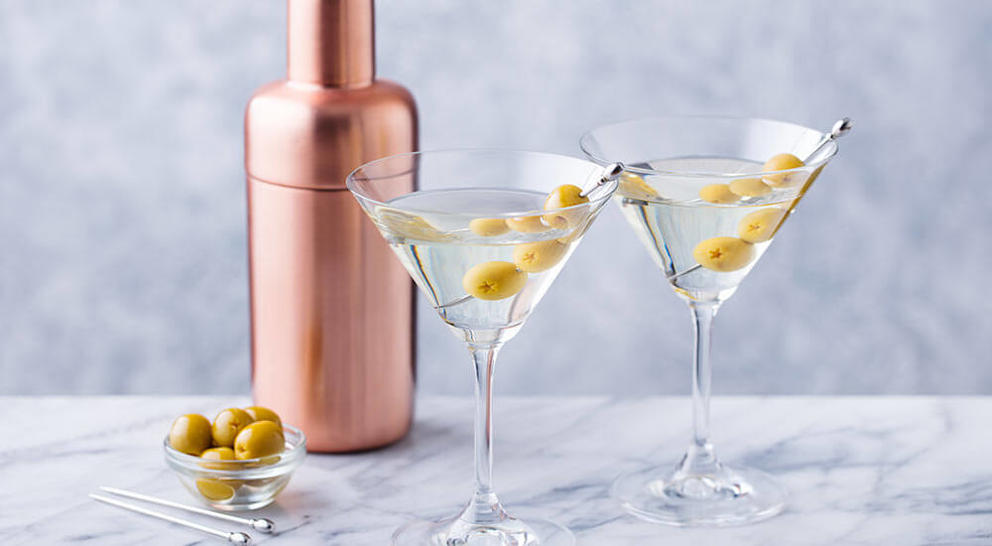
You're probably familiar with classic and most popular cocktails like martinis or mojitos, but bartending guides can contain hundreds of recipes using dozens of liquors and mixers.
Whether you're building your own bar stock or just want to know more about what to order on a night out, start with the basics. Most bartenders can make the best champagne cocktails, but fewer will be able to serve up a proper Drunken Elf.
While the list of the most popular cocktails through the ages changes as drinks go in and out of fashion, a few perennial favourites refuse disappear, including these...
Old Fashioned
This whiskey cocktail is made from bourbon or scotch, bitters, sugar and a twist of orange, this classic is the grandfather of all rock glass cocktails. The Old Fashioned cocktail is a firm favourite nowadays.
Moscow Mule
Vodka, fresh lime and ginger beer are served up to make this holy trinity in a copper mug, Here's the original Moscow Mule recipe.
Margarita
A well-composed Margarita features fresh lime, tequila and salt with just enough Triple Sec to sweeten it.
Negroni
Another short cocktail like the Old Fashioned, a classic Negroni recipe contains gin, Campari and sweet vermouth.
Mimosa
The Mimosa is an elegant cocktail and contains roughly equal parts Champagne and orange juice and is a delight for brunch. Other sparkling cocktails play on this theme with different juices or sparkling wines.
Sazerac
Developed in New Orleans, a Sazerac brings rye whisky, a sugar cube, a dash of Angostura bitters and a nip of absinthe together in elegant harmony.
Daiquiri
Frozen variations as sweet as desserts exist, but the original Daiquiri is made with rum, lime juice and just enough simple syrup to balance the tartness.
Martini
Ever wondered what is a martini? Many drinks borrow the name, but the quintessential Martini contains only gin or vodka, dry vermouth and an olive. Jame Bond notwithstanding, purists typically prefer them stirred. Our spirit of choice would be the gin cocktail version.
Champagne Cocktail
This classic could be one of the oldest cocktails out there. Add brown sugar to a champagne flute and soak it with two or three dashes of Angostura bitters. Throwing in 25ml of brandy/Cognac, and top with chilled champagne. Garnish with an orange twist. Perfect.
Cosmopolitan
This blush pink beverage is a heady combination of citron vodka, Triple Sec and cranberry juice and was made famous in the 90s by Sex And The City. Add lime juice and orange bitters, then shake and fine strain for the perfect Cosmopolitan.
Sidecar
A brandy-based Sour, create the perfect Sidecar by mixing 40ml Cognac, 20ml Cointreau, 30ml fresh lemon juice, 10ml sugar syrup, and garnish with a sugar rim. Simple.
Cocktail Measurements
These can differ from country to country, however on the whole cocktail measurements are measured in cl or ml, and will differ depending on the kind of glass and drink that is being served.
For example:
1 Shot/or a Single Pour = 25ml/2.5cl
Double Shot/ or a Double Pour = 50ml/5cl
However, free pouring is particularly popular nowadays without the use of a jigger - and is a different kettle of fish that requires skill and practice. For example, in the UK bartenders must be trained and record and demonstrate their proficiency when free pouring drinks.
Different Cocktail Types
Popular drinks are only part of the story, and to understand unique cocktails like a mixologist does, you need to think in terms of types of cocktails rather than individual recipes.
Being able to mix your own concoctions on the fly can make you a legend. By understanding these cocktail types, you can branch out on your own with new creations.
NOTE: The kind of glass you use is also important...
Short Cocktails
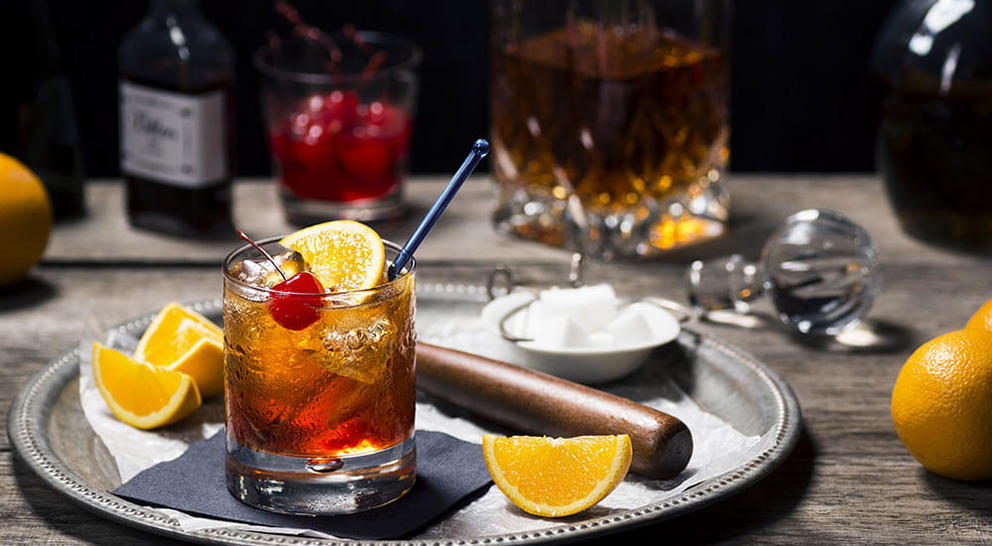
The most venerable cocktails are stirred or shaken drinks served in rocks glasses, usually consisting of a liquor and a mixer with a simple garnish. An Old Fashioned is an excellent example of a traditional stirred short cocktail; so is a Negroni. Despite its distinctive conical glass, the Martini is in this same family too. The original cocktails are still as popular as ever.
Highball Cocktails
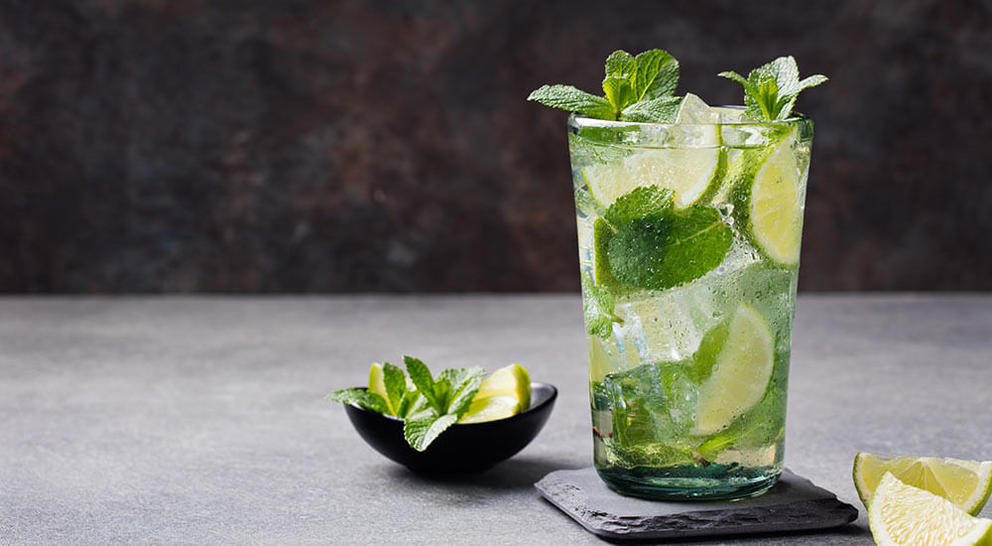
Tall and elegant, traditional highballs contain only two ingredients, usually with an emphasis on the mixer. Any pairing of a soda and a liquor is a highball, including a Rum and Coke or a Cuba Libre. Highballs can be as potent as their server wants to make them, but they are typically friendly to sippers.
Blended Cocktails
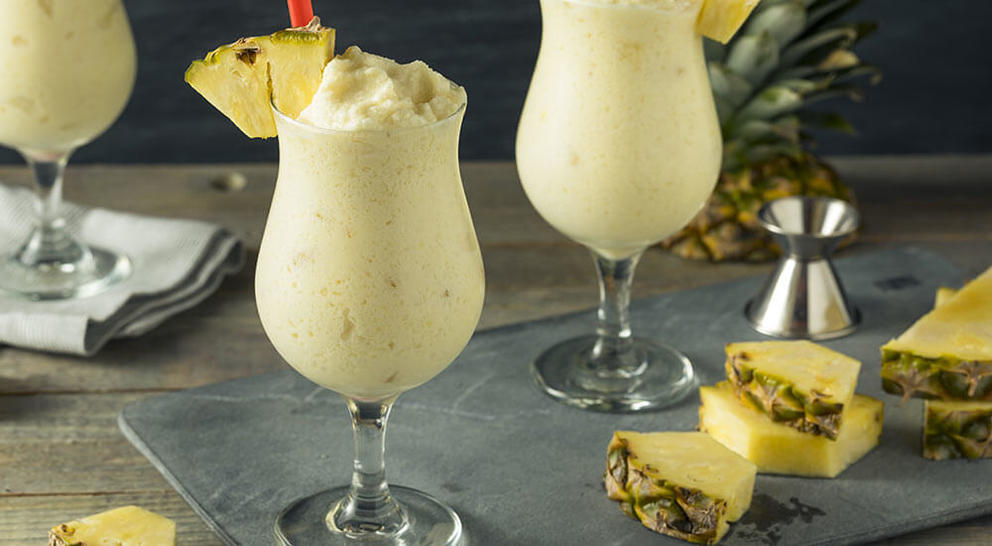
Whether shaken by hand or put in a blender, this cocktail category takes more specialised equipment than the previous ones. Cosmopolitans, the fruitier counterpart of the Martini, is best served shaken to blend it thoroughly. Frozen cocktails, including fruity Daiquiris and Piña Coladas, also fall into this category and are perfect for summer. Many hybrid cocktails are also blended drinks, taking classic recipes and putting a twist on them by freezing, shaking or adding new liqueurs.
Hot Cocktails
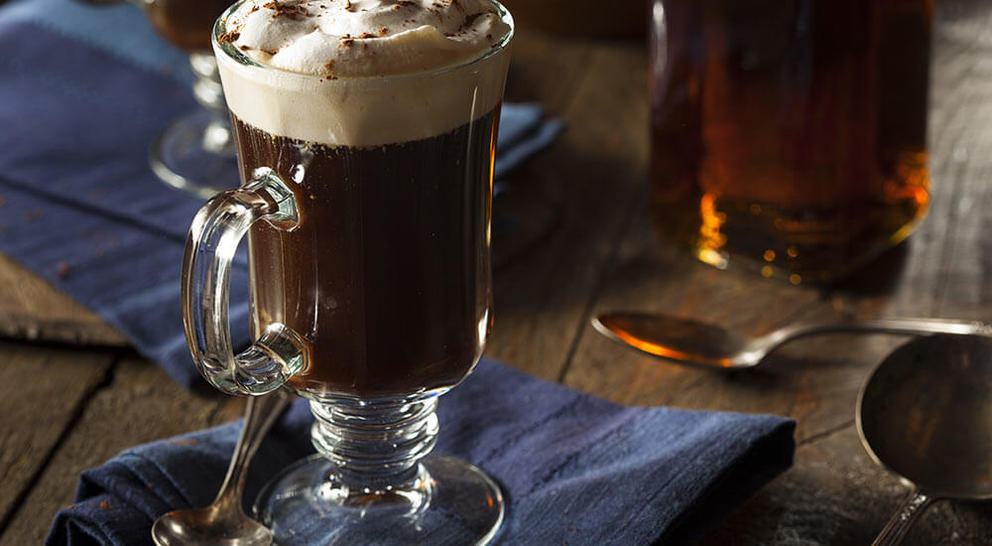
At the other end of the spectrum are hot cocktails. Irish coffee, hot buttered rum and apple cider are some examples of drinks best served hot. Many of the drinks in this category have old-world roots and are ideal as winter drinks. Enjoy them at holiday parties as easy Christmas cocktails, but don't expect every bar to be able to accommodate your cravings for them; not every neighbourhood watering hole has the ingredients on hand.
Tiki and Speciality Cocktails
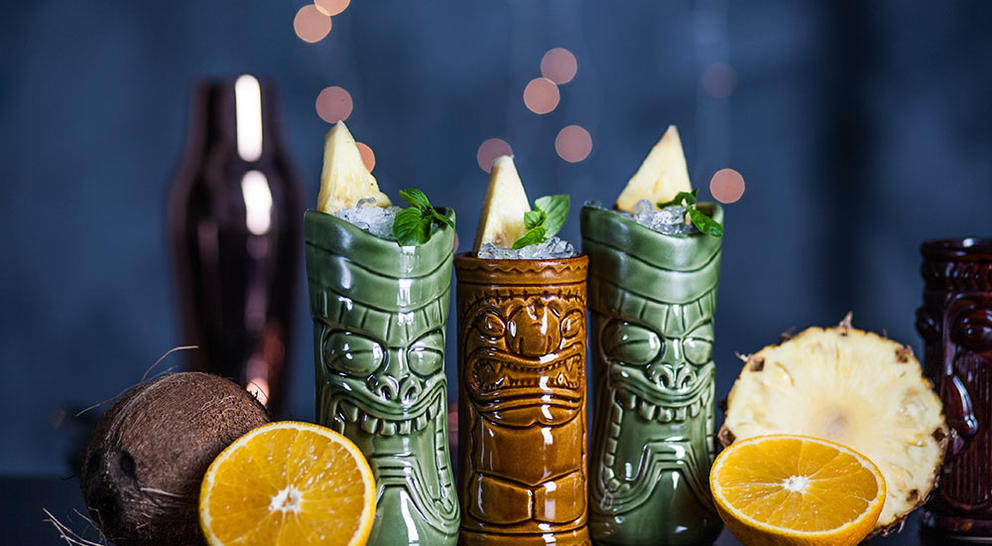
These fruity, frothy cocktails with exotic names transport you to a beach on a tropical island paradise, which might explain their popularity. One of the distinctive features of these Polynesian marvels is the variety of glassware in which they're served; novelty mugs shaped like Easter Island's stone heads, carved idols or lengths of bamboo are part of the fun of these specialty drinks. Some of the most popular are the Mai Tai, the Fog Cutter and the Singapore Sling.
Shooter Cocktails
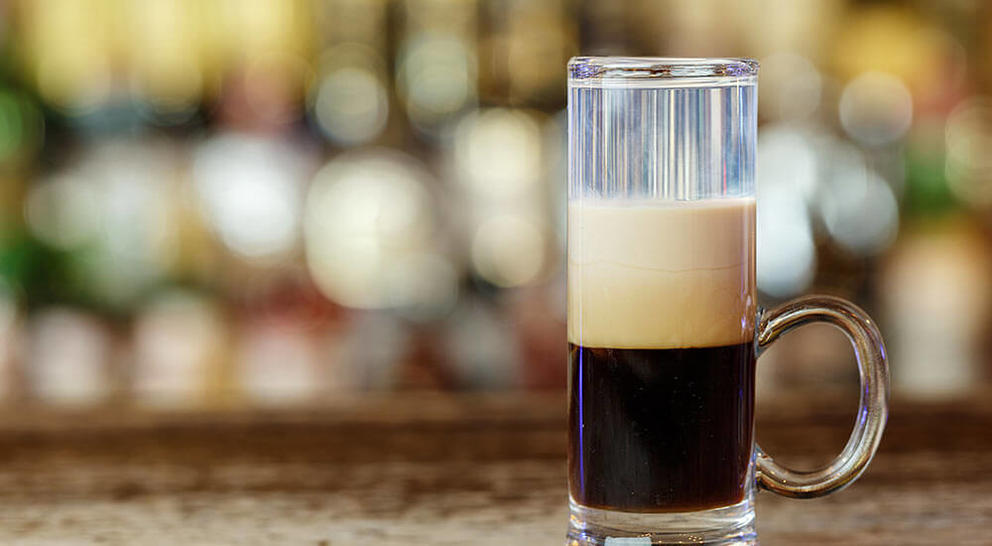
Not every cocktail is meant for sipping. Shooter cocktails are designed to go down in a single flavourful gulp, and although they can be just as complex as their more sophisticated relatives, they have a sense of fun about them. Layered cocktails, including the B-52 and the cement mixer, look colourful in the shot glass and bring an element of texture when tossed back. Plus, they're great cocktails for beginners, being super easy to make!
Healthy Cocktails and Smoothie Cocktails
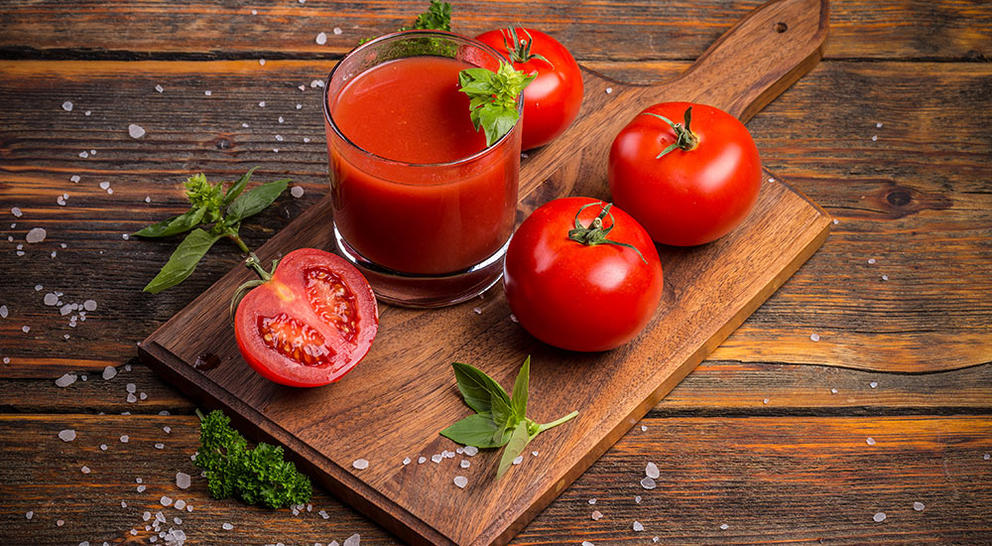
Can you blend virtue and vice together? Healthy cocktail drinkers would say yes. By blending a liqueur or spirit with healthy ingredients such as fresh fruit and yoghurt, a cocktail can earn its halo of good health. Vegan cocktails skip cream and milk-based ingredients in favour of juices, while fruit cocktails are almost as much of a meal as they are a drink.
Non-Alcoholic Cocktails
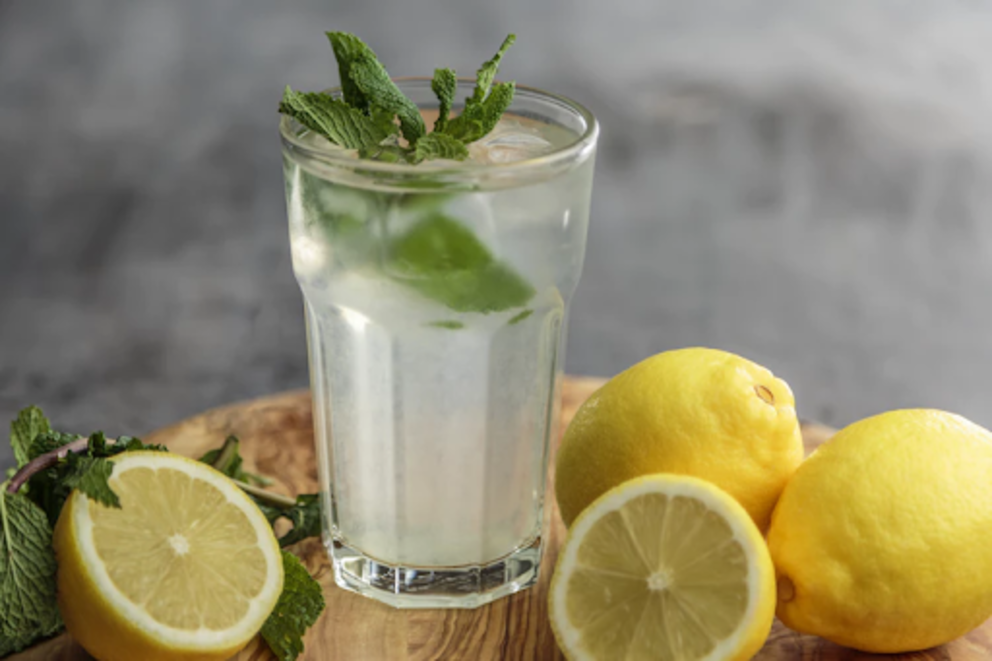
Alcohol is in most cocktails, but it isn't a requirement. Many recipes can be made in virgin versions that are non-alcoholic, while others are designed without alcohol in the first place. The one of the most quintessential mocktails to order at a bar is the Shirley Temple, a light, sweet mixture of grenadine, soda and lime to create a sparkling cocktail. Or try our recipe for a non-alcoholic Mojito.
Low-calorie cocktails
Did you know that most spirits clock up around 50-60 calories for every 25ml measure? But don't panic as vodka is the most sensible choice of spirit - containing low levels of sugar and carbohydrates. Yes, a low-calorie cocktail like Moscow Mule, consisting of vodka, ginger beer, cranberry juice, fresh mint leaves and ginger, will give you a tangy cocktail with a kick, and is only 128 calories.
Cocktails to make at home
Feeling inspired? If you want to try your hand at mixing drinks, here are the best cocktails to make at home. You won't need any of the fancy equipment, just spirits, mixers and ice - all for your drinking pleasure.
And if that gives you a taste for cocktail making, you can always try one of our bartending courses here.
